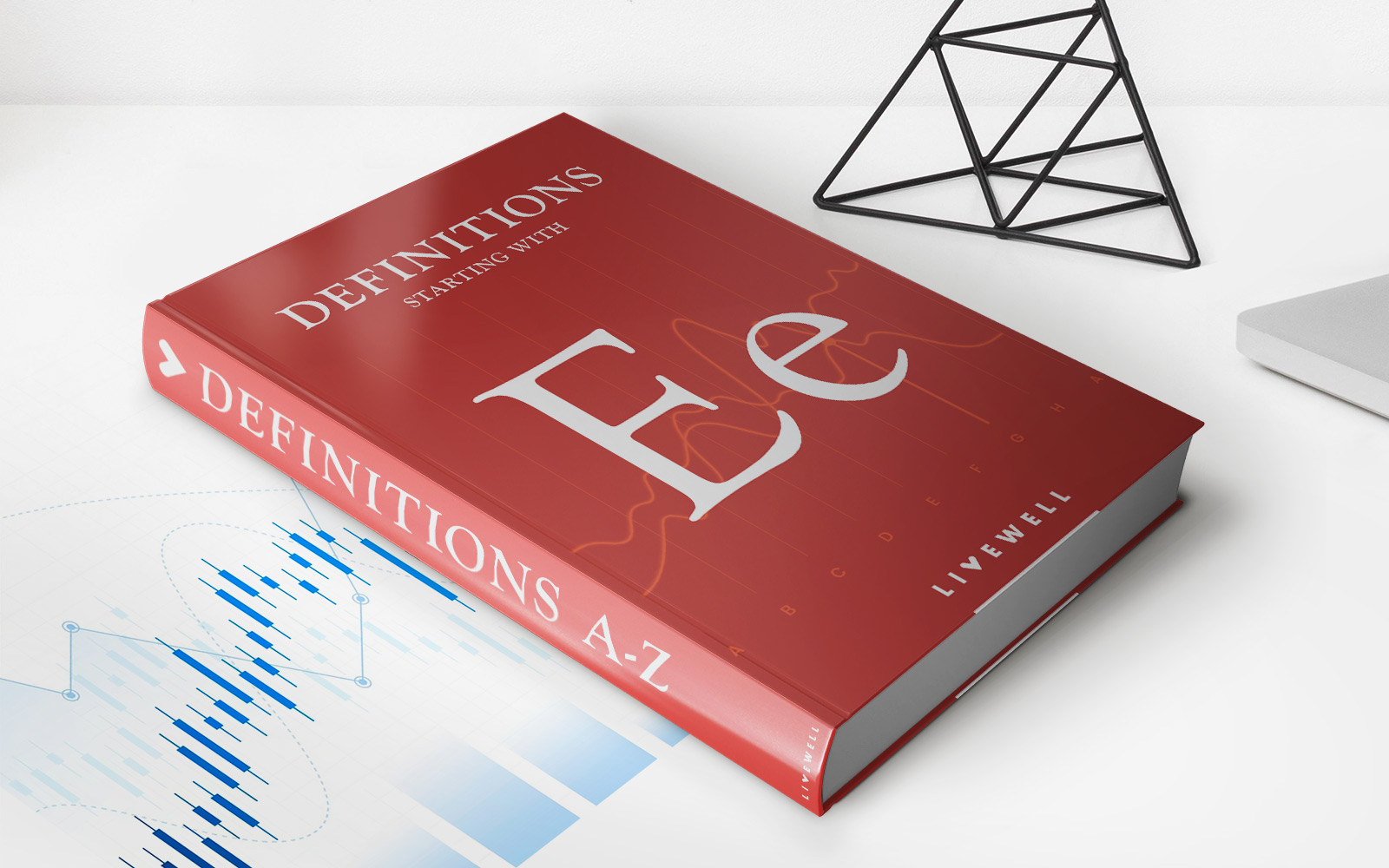Home>Finance>What Does The Face Value Of Life Insurance Mean?


Finance
What Does The Face Value Of Life Insurance Mean?
Modified: February 21, 2024
Understand the concept of face value in life insurance and its financial implications. Get insights into how it affects your overall coverage and financial planning.
(Many of the links in this article redirect to a specific reviewed product. Your purchase of these products through affiliate links helps to generate commission for LiveWell, at no extra cost. Learn more)
Table of Contents
Introduction
Life insurance is a crucial aspect of personal financial planning. It provides financial protection to your loved ones in the event of your untimely demise. When considering life insurance, you may come across the term “face value.” But what exactly does the face value of life insurance mean? In this article, we will delve into the concept of face value and its significance in the world of life insurance.
The face value, also known as the death benefit or nominal value, refers to the amount of money that will be paid out to beneficiaries upon the policyholder’s death. It is the initial amount of coverage that is specified when you purchase a life insurance policy.
The face value is a crucial aspect of life insurance as it determines the financial protection that your loved ones will receive in the event of your passing. It plays a significant role in ensuring that your family can maintain their financial stability, pay off debts, cover daily living expenses, and meet future financial goals.
Understanding the face value of your life insurance policy is essential for making informed decisions regarding coverage amounts and premium payments. By comprehending the face value, you can ensure that your loved ones are adequately protected and financially secure.
Next, we will explore the importance of the face value in life insurance and how it impacts your policy.
What is the Face Value of Life Insurance?
The face value of a life insurance policy refers to the predetermined amount of money that will be paid out to the beneficiaries upon the death of the insured individual. It is the financial protection that is provided by the policy and is typically stated as a fixed dollar amount.
The face value represents the maximum payout that the insurance company is obligated to provide to the beneficiaries. For example, if you have a life insurance policy with a face value of $500,000, your beneficiaries will receive that amount in the event of your death, provided that the policy is active and the premiums have been paid.
It is important to note that the face value of a life insurance policy does not include any additional benefits or accumulated cash value. It is solely the amount that will be paid out upon death, and it does not factor in any investment or savings components of the policy.
The face value is determined based on several factors, including your age, health condition, lifestyle habits, and desired coverage amount. Younger individuals with better health and fewer risky habits typically qualify for higher face values since they are considered lower risk by the insurance company. On the other hand, older individuals or those with pre-existing health conditions may qualify for lower face values or face difficulties in obtaining coverage altogether.
It is worth mentioning that the face value of a life insurance policy can remain the same throughout the duration of the policy or can decrease over time, depending on the type of policy you choose. Term life insurance policies, for example, typically have a fixed face value for a specific duration, while permanent life insurance policies may have a face value that can increase or accumulate cash value over time.
Now that we have explored the definition of the face value, let’s delve into the importance of this aspect in life insurance and the factors that can affect it.
Importance of Face Value in Life Insurance
The face value of a life insurance policy holds significant importance for both the policyholder and their beneficiaries. Here are a few reasons why the face value is crucial in the world of life insurance:
Financial Protection:
The primary purpose of life insurance is to provide financial protection to your loved ones in the event of your death. The face value determines the amount of money that will be paid out to your beneficiaries, ensuring that they have the necessary funds to cover expenses such as funeral costs, outstanding debts, mortgage payments, and ongoing living expenses. Thus, a sufficient face value is essential in providing the desired level of financial security for your loved ones after you are gone.
Income Replacement:
In addition to covering immediate expenses, the face value of life insurance can also serve as a means to replace lost income. If you are the primary breadwinner of your household, your death could leave your family without a significant source of income. The face value can help bridge this financial gap by providing your loved ones with a lump sum payout that can be used to replace the lost income and maintain their standard of living.
Debt Settlement:
Many individuals have outstanding debts such as mortgages, car loans, or credit card balances. These debts can place a heavy burden on surviving family members if they are left to handle them on their own. With an adequate face value, your life insurance policy can be used to settle these debts, relieving your loved ones of any financial obligations and giving them peace of mind during a difficult time.
Estate Planning:
The face value of a life insurance policy can also play a vital role in estate planning. It can help provide liquidity to your estate, ensuring that there are enough funds available to cover estate taxes, legal fees, and other expenses. Additionally, the face value can be used to equalize inheritances among beneficiaries or leave a charitable legacy.
Flexibility in Beneficiary Designation:
Life insurance policies allow you to designate one or more beneficiaries who will receive the death benefit. The face value provides flexibility in choosing the amount of coverage that each beneficiary will receive. This can be particularly important if you have specific financial obligations to certain individuals, such as providing for a spouse, children, or dependent parents.
With the understanding of the importance of face value, let’s now examine the factors that can impact the determination of face value in life insurance policies.
Factors Affecting the Face Value of Life Insurance
The face value of a life insurance policy is determined based on several key factors. Understanding these factors can help you determine the appropriate coverage amount for your needs. Here are some of the main factors that can affect the face value:
Age:
Age plays a significant role in determining the face value of a life insurance policy. Generally, younger individuals qualify for higher face values since they are considered to have a lower risk of passing away prematurely compared to older individuals. As you age, the face value offered by insurance companies may decrease or become more challenging to obtain, as the likelihood of developing health issues or passing away increases.
Health Condition:
Your overall health and pre-existing medical conditions are crucial factors in determining the face value of your life insurance policy. Insurance underwriters assess your health through medical underwriting, including a review of your medical history, physical examinations, and potentially additional medical tests. Individuals in good health typically qualify for higher face values since they are considered lower risk by insurance companies.
Lifestyle Habits:
Your lifestyle habits can also impact the face value of your life insurance policy. Factors such as smoking, excessive alcohol consumption, and engagement in high-risk activities can increase the risk of premature death, resulting in lower face values or higher premiums. Insurance companies evaluate lifestyle habits to assess your risk level accurately.
Gender:
Gender is another factor that can influence the face value of life insurance policies. Statistically, women tend to have longer life expectancies compared to men, which may result in lower premiums and higher face values for women. On the other hand, men may have higher premiums and potentially lower face values due to their higher mortality rates.
Occupation:
The nature of your occupation can impact the face value of your life insurance policy. Certain occupations are considered more hazardous and carry higher risks of injury or death. Insurance companies assess occupation-related risks when determining face values and premiums. For individuals working in high-risk occupations, the face value may be lower or require a specialized policy that covers occupational hazards.
Coverage Amount:
The desired coverage amount also affects the face value of life insurance. If you want higher financial protection for your loved ones, you will need to select a higher face value. Insurance companies offer various face values to accommodate different coverage needs, and adjusting the coverage amount will impact the premiums you pay.
Considering these factors, it is important to assess your specific circumstances and work with an experienced insurance professional to determine the appropriate face value that adequately meets your coverage needs and budget.
Calculation of Face Value
The process of calculating the face value of a life insurance policy can vary depending on the type of policy and the specific terms and conditions set by the insurance company. However, there are some general guidelines to consider when determining the face value:
Income Replacement Approach:
One common method for calculating the face value is the income replacement approach. This approach takes into account your annual income and the number of years you want to provide financial support to your beneficiaries after your passing. Generally, it is recommended to multiply your annual income by a factor of 5 to 10 to determine the appropriate face value. For example, if your annual income is $50,000 and you decide to provide financial support for 10 years, the face value would be between $500,000 and $1,000,000.
Needs-Based Approach:
Another approach is the needs-based approach, which takes your specific financial obligations and goals into consideration. This method involves determining the amount of money needed to cover immediate expenses, such as funeral costs and outstanding debts, and estimating future expenses, such as mortgage payments, education expenses, and daily living costs. By assessing your needs, you can calculate a face value that will satisfactorily provide for your beneficiaries.
Debt-Based Approach:
The debt-based approach focuses on calculating the face value based on your outstanding debts. This method involves totaling all your outstanding debts, including mortgages, car loans, credit card balances, and other liabilities, and setting the face value to cover those debts. The idea is for the policy payout to be used to settle the debts, ensuring that your loved ones are not burdened with financial obligations.
Consultation with an Insurance Professional:
While these approaches provide a general understanding of how face value can be calculated, it is important to consult with an experienced insurance professional to determine the most accurate and suitable face value for your specific situation. Insurance professionals can consider additional factors like inflation and potential returns on investments to provide more accurate estimates.
It’s important to note that each insurance company may have its own underwriting guidelines and calculations for determining the face value. Therefore, it is recommended to discuss your specific needs and preferences with an insurance professional to ensure that you choose an appropriate face value for your life insurance policy.
Difference Between Face Value and Cash Value
When discussing life insurance policies, two common terms that often come up are the face value and the cash value. While they are both related to the policy’s value, there are distinct differences between the two:
Face Value:
The face value, also referred to as the death benefit or nominal value, is the initial amount of coverage stated in the life insurance policy. It represents the total amount of money that will be paid out to the beneficiaries upon the death of the policyholder. The face value is fixed and does not change unless the policy is amended or updated. It serves as the primary indicator of the policy’s financial protection and determines the sum that the beneficiaries will receive.
Cash Value:
The cash value is an additional feature primarily found in permanent life insurance policies such as whole life or universal life insurance. Unlike the face value, the cash value is a savings component of the policy that grows over time. A portion of each premium payment is allocated towards the cash value. The cash value earns interest based on the policy’s specified rate of return or the performance of underlying investments. It provides a cash reserve that policyholders can access during their lifetime, either through policy loans or withdrawals.
The cash value is considered the policyholder’s equity in the life insurance policy. It is a form of asset accumulation, allowing policyholders to build a value that can be accessed while they are alive. The cash value can serve as a source of funds for various purposes, such as supplementing retirement income, funding education expenses, or dealing with unexpected financial needs.
Key Differences:
The main differences between the face value and cash value of a life insurance policy are as follows:
- The face value is the amount paid out to beneficiaries upon the policyholder’s death, while the cash value represents the policyholder’s savings or equity that can be accessed during their lifetime.
- The face value remains constant throughout the life of the policy, while the cash value grows over time through premium payments and interest accumulation.
- The face value is typically higher than the cash value, as it represents the maximum amount of coverage for the beneficiaries. The cash value, on the other hand, is a smaller component of the policy’s total value.
- The face value is the primary consideration when determining policy premiums. The cash value does not affect the premium amount directly but can influence the overall cost of the policy.
- If the policyholder chooses to withdraw or borrow from the cash value, it may have an impact on the face value and death benefit payout.
It’s important to note that not all life insurance policies have a cash value component. Term life insurance policies, for example, do not accumulate cash value, as they are designed to provide pure death benefit coverage for a specified term.
Understanding the distinction between face value and cash value is crucial when evaluating different life insurance options. Your financial goals and needs will determine whether a policy with cash value fits your requirements or if a policy with a higher face value is more appropriate for you and your beneficiaries.
Choosing the Right Face Value for Life Insurance
Choosing the right face value for your life insurance policy is a crucial decision that requires careful consideration. The face value should adequately provide for your loved ones’ financial needs in the event of your passing. Here are some key factors to keep in mind when selecting the appropriate face value:
Assess Your Financial Obligations:
Start by evaluating your current financial obligations and future expenses. Consider factors such as outstanding debts, mortgage payments, education expenses, and daily living costs. Determining the amount of money required to cover these financial obligations will help you determine an appropriate face value that can provide sufficient financial protection for your loved ones.
Consider Your Income and Lifestyle:
Take into account your current income and lifestyle when determining the face value. If you are the primary income earner for your family, a higher face value may be necessary to replace lost income and support your dependents. Similarly, if you have an extravagant lifestyle with high expenses, you may need a larger face value to ensure your loved ones can maintain their standard of living.
Think About Future Financial Goals:
Consider your future financial goals when choosing the face value. Are you planning to send your children to college or retire comfortably? Your life insurance policy’s face value can be instrumental in helping your family achieve these goals in your absence. Ensure the face value aligns with your long-term financial aspirations.
Account for Inflation:
Keep in mind that the cost of living tends to increase over time due to inflation. When determining the face value, consider the impact of inflation on future expenses. Ensuring the face value accounts for inflation can help maintain the intended level of financial protection for your beneficiaries years down the line.
Seek Professional Advice:
Getting guidance from an experienced insurance professional is essential when selecting the right face value for your life insurance. An insurance professional can help you assess your unique circumstances, understand policy options, and recommend an appropriate face value that aligns with your financial goals.
Review and Adjust Regularly:
Keep in mind that your financial situation and obligations may change over time. It is important to review your life insurance coverage periodically and adjust the face value accordingly. Major life events such as marriage, the birth of a child, or a change in income should prompt a reassessment of your life insurance needs.
Choosing the right face value for your life insurance policy requires thoughtful evaluation of your financial situation, future goals, and the needs of your loved ones. Taking the time to determine an appropriate face value ensures that your life insurance coverage provides the desired level of financial protection for your beneficiaries.
Conclusion
Understanding the concept of face value is essential when considering life insurance. It represents the amount of money that will be paid out to your beneficiaries upon your passing, providing them with financial protection during a challenging time. The face value plays a crucial role in ensuring that your loved ones can maintain their financial stability, cover expenses, and pursue their future goals.
Factors such as age, health condition, lifestyle habits, and coverage amount impact the determination of the face value. By considering these factors, you can select an appropriate face value that meets your specific needs and budget. It is always advisable to consult with an experienced insurance professional who can guide you through the process and offer insights tailored to your circumstances.
Distinction should also be made between the face value and the cash value of a life insurance policy. While the face value is the fixed amount paid out upon the policyholder’s death, the cash value refers to the savings component that accumulates over time in certain types of policies. Understanding these differences is crucial when evaluating different policy options.
When choosing the right face value, it is important to assess your financial obligations, consider your income and lifestyle, think about future financial goals, account for inflation, and seek professional advice. Regularly reviewing and adjusting your life insurance coverage ensures that the face value remains appropriate as your circumstances evolve.
In conclusion, the face value of a life insurance policy is a vital component that provides financial security to your loved ones. By understanding its meaning and significance, you can make informed decisions regarding your life insurance coverage, ultimately ensuring that your beneficiaries are protected and supported during difficult times.














